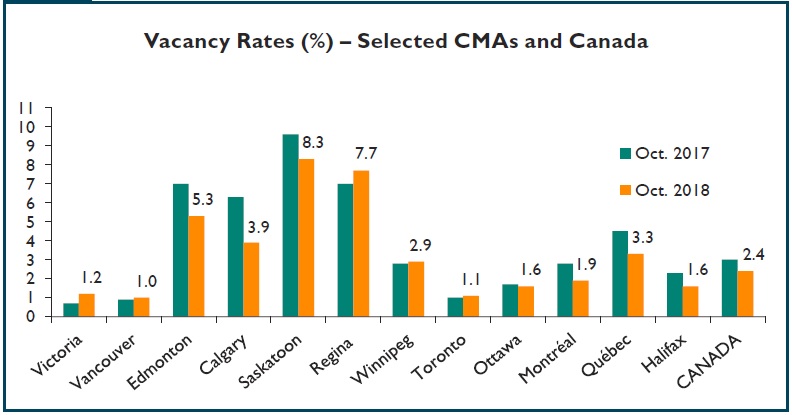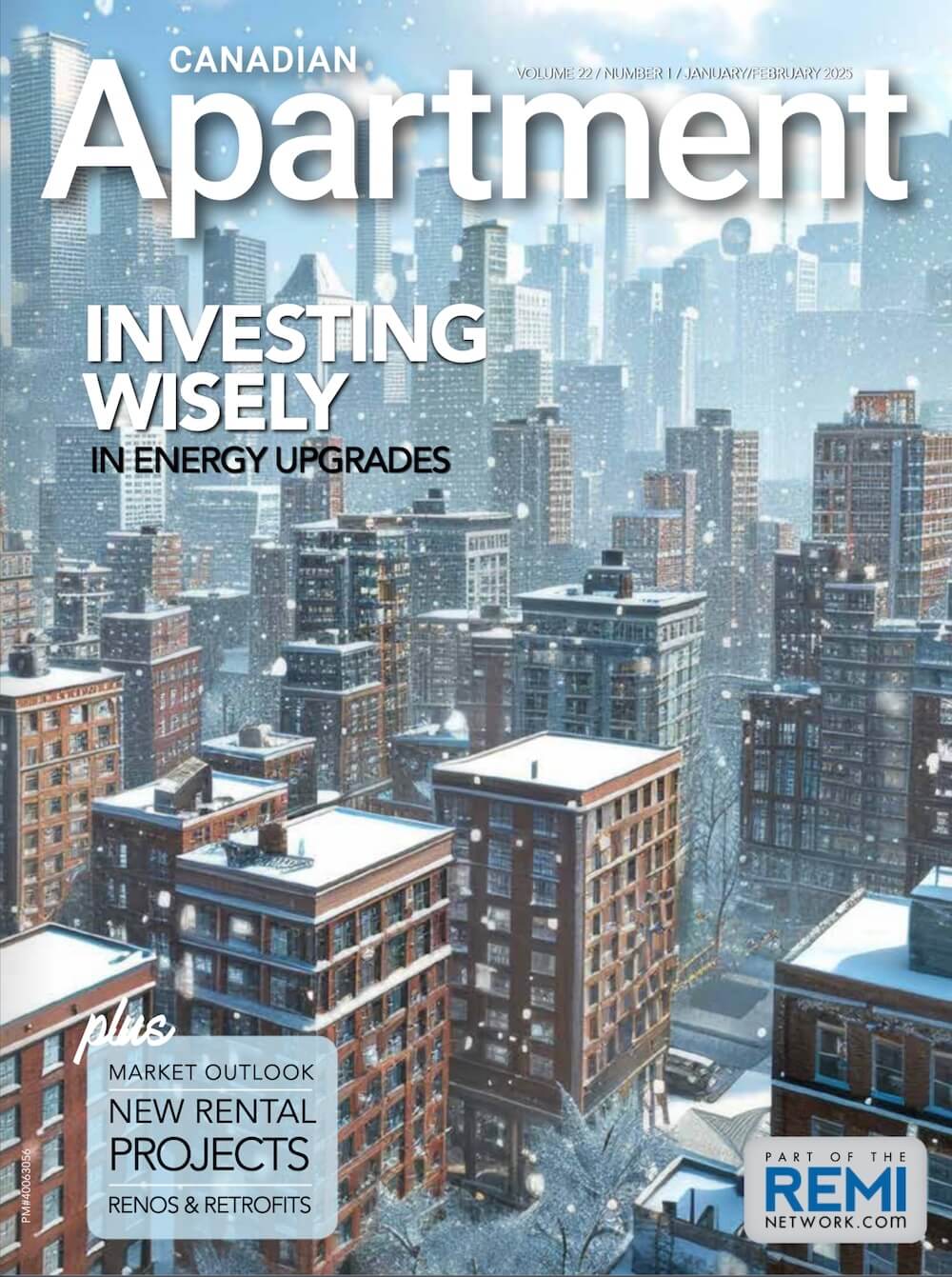Demand for rental housing across Canada continues to rise according to CHMC’s latest Rental Market Report, released annually in November. This growth in demand stems from a variety of factors, including increases in international migration and youth employment, as well as the changing needs and housing choices of an aging population.
With growth in demand outpacing growth in supply, the overall vacancy rate for rental apartments in Canada fell to 2.4 per cent. Regionally, vacancy rates fell in Quebec, Alberta, Saskatchewan and the Atlantic region, while in Ontario, British Columbia and Manitoba, they rose slightly.
“The decrease in vacancy rate was attributable in part to the strong increase in international migration,” said Aled ab lorweth, Deputy Chief Economist. “This factor combined with the growth in youth employment and the aging population drove up demand for rental housing.”

Vacancy rates decrease in most provinces
In Quebec, the vacancy rate fell significantly, from 3.4 per cent in 2017 to 2.3 per cent in 2018. Because of Quebec’s large rental housing stock compared to other provinces, the decrease there contributed greatly to the decrease in the national rate.
Meanwhile, in the oil-producing provinces of Saskatchewan and Alberta, rental markets continued to recover from the 2014 oil crisis. In both provinces, rental demand was boosted by stronger net migration. This greater demand, combined with the weaker growth in supply in these two provinces, drove down vacancy rates. In Alberta, vacancy rates went from 7.5 per cent in 2017 to 5.5 per cent in 2018. In Saskatchewan vacancy rate went from 9.3 per cent in 2017 to 8.7 percent in 2018.
In the Atlantic region, all provinces saw their vacancy rates fall. In Newfoundland and Labrador, though, while the vacancy rate fell from 6.6 per cent to 6.0 per cent, this represented a decrease of only about 20 units. Such relative stability was due to steady supply and demand, reflecting stagnant economic activity and moderate employment growth.
Ontario (1.8 per cent versus 1.6 per cent in 2017) and British Columbia (1.4 per cent versus 1.3 per cent in 2017) saw their vacancy rates increase slightly, while remaining amongst the lowest in the country.
Manitoba, for its part, experienced a small increase in its vacancy rate, which rose from 2.7 per cent in 2017 to 2.9 per cent in 2018.These increases, however, were not enough to offset the downward national trend.
National Averages:

Source: CMHC 2018 Rental Market Report. Download the complete report here.






